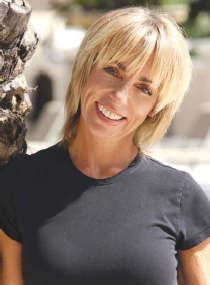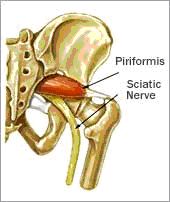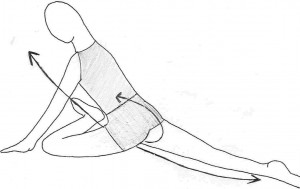Health & Fitness
SCIATICA – THE MOTHER OF ALL PAINS
By Cheryl Alker
If you have ever suffered with sciatica then you will relate to the above title, in fact up to 10% of us will suffer with sciatica at one time in our life but it usually affects people from 25 to 50 years of age. Sciatica refers to pain, weakness, numbness or tingling in the leg. It is caused by injury to or pressure on the sciatic nerve. Sciatica is a symptom of another medical problem, not a medical condition on its own.
The sciatic nerve is the largest and longest nerve in the body. It runs from the lower back region through the buttock and continues down the back of the leg. The sciatic nerve controls the movement of many muscles in the thigh and leg and provides sensation to the back of the thigh, part of the lower leg and the sole of the foot.
As previously mentioned sciatica is the symptom of another medical problem and should you be experiencing sciatic pain you should be evaluated by your physician to determine the cause. However, some more common causes of sciatica include:-
Herniated Disc
Sciatica can result when one the vertebral discs of the lower back protrudes outward and compress the nerve roots that form the sciatic nerve. This compression irritates the nerve and causes swelling and pain along the sciatic nerve. Herniated discs are the most common cause of sciatica.
Lumbar Spinal Stenosis
Lumbar spinal stenosis refers to a narrowing of the spinal canal in the lower back region. When the spinal canal becomes narrow in this area, it can compress portions of the nerves that combine to form the sciatic nerve.
Piriformis Syndrome
The piriformis is a small muscle located deep in the buttock region It assists in abducting (lifting out) and externally rotating the hip joint. The sciatic nerve runs extremely close to the piriformis muscle, and occasionally runs through it. As a result, when the piriformis muscle becomes tight, it often puts pressure on the sciatic nerve causing irritation and inflammation.
Exercises for Sciatica
Stretching and strengthening exercises that target the muscles of the lower back, abdomen and thighs can help reduce the symptoms of sciatica. There are a few beneficial exercises to help decrease pain associated with sciatica. Below is a stretch that can help with piriformis syndrome.

Position:
· Bend the left leg in front, the other extended behind.
· Place your hands to the sides for support.
· Turn the knee of your front leg to the left on the floor.
· Move your foot to the right, and sit on your left buttock.
· Keep the back leg extended behind you, and turn it slightly in from the top of the leg.
· Move your pelvis into an upright position.
· Lean slightly forward, bending your arms.
Directions:
 · Focus on the deeper buttock muscles, the sitting bone area, of the left side.
· Focus on the deeper buttock muscles, the sitting bone area, of the left side.
· Create the stretch while breathing out. Bend your arms to apply additional weight through the part of the buttock you are working on.
· Tilt the tailbone towards the ceiling to create distance between the bones.
Variations:
Keeping the pelvis where it is, move the upper body to the right and then the left.
If you have a knee joint problem you may find the standing gluteal stretch more comfortable.
If the seated gluteal stretch is difficult for you to get into, then this stretch may be more suitable. The diagram shows the leg being lifted onto a barre, however, you can use the back/arm of a sofa or chair, a table, your bed in fact anywhere that you can comfortably raise your leg onto. You may find it more suitable to place a ball or cushion underneath the knee or shin area of the raised leg, particularly if you have poor mobility in the pelvis. Be aware that one side can be significantly tighter than the other.
 Position:
Position:
· Standing beside a barre, sofa, table etc., lift and bend your left leg up in front of you at waist height.
· Rest your foot and bent leg onto the surface and drop the knee to the left.
· Turn the standing leg in at the hip and keep your pelvis facing forward.
· Place your hands on the support, and tilt your tail bone away from your navel.
· Start to lower the upper body, keeping the chest lifted.
· Control your weight with your hands.
Directions:
· Focus on the deeper buttock muscles (the sitting bone area) of the left bent leg.
· As you breathe out, engage your abdominal corset and tilt your tailbone further away from your navel i.e. away from you.
· Create the stretch with the opposition of movement. Bend your right, standing leg and turn your left knee further towards the floor. You will feel the stretch in your buttocks. Keep your sitting bones at the original height.
· Deepen the stretch by rotating your torso towards your leg that is on the barre and turn the supporting foot also towards the leg on the barre.
If you would like more stretches for sciatica, or back, neck and shoulder pain please visit www.stretchresults.com where you can download other exercises or purchase my Free Yourself From Back Pain DVD.
Cheryl Alker specializes in flexibility training, back pain and postural alignment. Her 30 year career started as a group fitness and personal trainer, she has lectured and directed fitness training programs in both Europe and the USA and was an advisor for a Governmental health promotion program. Alker and her company Stretch Results International continues to work with a select clientele from a base in Palm Beach County, Florida, educating consumers through public speaking and offering consultation to clients who wish to lose their muscular pain and gain flexibility to achieve full and active lifestyles. Alker has just released a DVD for back pain sufferers. For more information about her DVD’s, E:books and consultation options, please call Cheryl on 561 889 3738 or visit www.stretchresults.com.
This information is solely for informational purposes. IT IS NOT INTENDED TO PROVIDE MEDICAL ADVICE. Neither the Editors of Around Wellington. Stretch Results International, the author nor publisher take responsibility for any possible consequences from any treatment, procedure, exercise, dietary modification, action or application of medication which results from reading or following the information contained in this information. The publication of this information does not constitute the practice of medicine, and this information does not replace the advice of your physician or other health care provider. Before undertaking any course of treatment, the reader must seek the advice of their physician or other health care provider.

